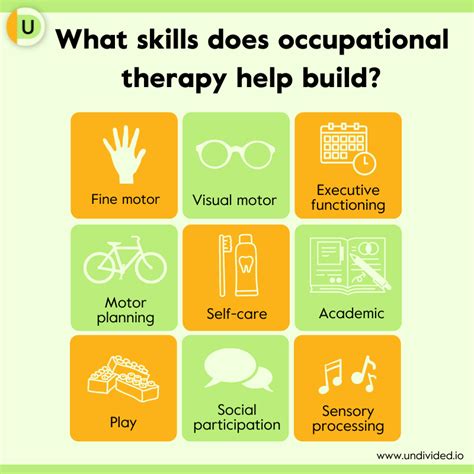Intro
Unlock the meaning of OT and discover its various applications. Learn what OT stands for in different contexts, including Occupational Therapy, On Topic, and Over Time. Explore the significance of OT in healthcare, online communities, and sports, and understand its relevance in modern usage.
Occupational therapy (OT) is a vital healthcare profession that helps individuals develop, recover, or maintain the skills needed for daily living and work. Despite its importance, many people are still unsure what OT stands for and what it entails. In this article, we will delve into the world of occupational therapy, exploring its definition, benefits, and applications.
What is Occupational Therapy?

Occupational therapy is a healthcare profession that focuses on enabling individuals to participate in activities that are meaningful and purposeful to them. OT practitioners work with patients to identify and address physical, emotional, and cognitive limitations that may be hindering their ability to engage in daily activities.
The Goal of Occupational Therapy
The primary goal of occupational therapy is to help individuals develop the skills and strategies needed to perform daily tasks, such as bathing, dressing, and feeding, as well as more complex activities like work, leisure, and social participation. OT practitioners aim to empower patients to achieve independence, confidence, and a sense of fulfillment in their daily lives.
Who Can Benefit from Occupational Therapy?

Occupational therapy can benefit individuals of all ages and abilities. Some common populations that may benefit from OT include:
- Children with developmental delays or disabilities
- Adults with physical or mental health conditions, such as stroke, spinal cord injury, or mental illness
- Older adults with age-related declines in physical or cognitive function
- Individuals with chronic pain or fatigue
- Those recovering from surgery or injury
How Does Occupational Therapy Work?
Occupational therapy typically involves a comprehensive assessment of the individual's physical, emotional, and cognitive abilities. Based on the assessment, the OT practitioner will develop a personalized plan to address the individual's specific needs and goals.
This plan may include:
- Adaptive equipment and technology to facilitate daily activities
- Exercises and activities to improve physical function and mobility
- Strategies to enhance cognitive function and memory
- Techniques to manage stress and anxiety
- Education on healthy habits and lifestyle modifications
Types of Occupational Therapy

There are several types of occupational therapy, including:
- Physical disability OT: focuses on helping individuals with physical disabilities, such as spinal cord injuries or amputations
- Mental health OT: focuses on helping individuals with mental health conditions, such as depression or anxiety
- Pediatric OT: focuses on helping children with developmental delays or disabilities
- Geriatric OT: focuses on helping older adults with age-related declines in physical or cognitive function
- Rehabilitation OT: focuses on helping individuals recover from injury or surgery
Benefits of Occupational Therapy
The benefits of occupational therapy are numerous and well-documented. Some of the most significant advantages include:
- Improved physical function and mobility
- Enhanced cognitive function and memory
- Increased independence and confidence
- Better management of stress and anxiety
- Improved overall quality of life
How to Access Occupational Therapy Services

Occupational therapy services can be accessed in a variety of settings, including:
- Hospitals and rehabilitation centers
- Clinics and private practices
- Schools and community organizations
- Home healthcare services
To access OT services, individuals can:
- Ask their primary care physician for a referral
- Contact their insurance provider to determine coverage
- Search online for local OT practitioners or clinics
Conclusion
Occupational therapy is a vital healthcare profession that can have a profound impact on an individual's quality of life. By understanding what OT stands for and how it can benefit individuals, we can better appreciate the importance of this profession and the role it plays in promoting health, wellness, and independence.
We hope this article has provided you with a comprehensive understanding of occupational therapy and its applications. If you have any questions or comments, please feel free to share them below.
What is the primary goal of occupational therapy?
+The primary goal of occupational therapy is to help individuals develop the skills and strategies needed to perform daily tasks and achieve independence, confidence, and a sense of fulfillment in their daily lives.
Who can benefit from occupational therapy?
+Occupational therapy can benefit individuals of all ages and abilities, including children with developmental delays or disabilities, adults with physical or mental health conditions, and older adults with age-related declines in physical or cognitive function.
How does occupational therapy work?
+Occupational therapy typically involves a comprehensive assessment of the individual's physical, emotional, and cognitive abilities, followed by the development of a personalized plan to address the individual's specific needs and goals.
